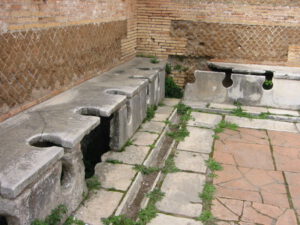Plumbing Invented
The invention of modern plumbing was an incredibly important step in the development of civilizations throughout history. It allowed humans to procure and dispose of water in a safe, clean manner that kept diseases at bay.
Many of the most popular civilizations in history developed more advanced plumbing systems than most people realize. This is because these societies often had a large amount of population and needed to have access to clean drinking water and sewage disposal. These systems evolved and became more extensive as cities grew in size. Some of these systems include aqueducts, sewers, public baths and lead piping systems.

The earliest plumbing pipes were made of baked clay and straw, although they soon transitioned to copper, which was more durable. The Egyptians were particularly good at creating copper pipe systems, which they also used to supply wells. Aside from their aqueducts, the Romans were also responsible for plumbing innovations that we still use today. They had public bathrooms that were connected to underground sewers, bronze and lead piping systems, and marble fixtures.
When Was Plumbing Invented?
They also had water channels and fountains that powered by gravity to carry 300 gallons of fresh water. The Romans were especially adept at distributing water to areas outside of the city, including their own private gardens and wells. Until 1850, the only way to flush a toilet was by placing a bucket of water over it and waiting for it to run down and flush. This system was not as efficient as it is today and required a lot of water to use, Julie Beck said in an article for The Atlantic.
The next major advancement in plumbing was the flushing toilet, which came from Crete. This invention was made possible by a stone seat placed over a channel of streaming water fed by pipes. This was a great innovation that helped to improve sanitation, according to Barksdale. Thomas Crapper was the man who paved the way for flushing toilets, but he did not invent the toilet. Instead, he manufactured one of the first lines of flush toilets in London and was awarded nine patents for his plumbing innovations.
Before 1850, a bathroom was not common in most homes, with many families relying on communal water pumps or outdoor privies. These were usually poorly maintained and frequently overflowed, which caused disease in many communities. The summer of 1858 was a turning point in the move towards plumbing, as hot weather exacerbated the smell of untreated sewage in rivers, causing a crisis that eventually led to the construction of the first sewer network in London and other industrial cities across Britain.
While these advances in plumbing were groundbreaking, they weren’t without their problems. They weren’t uniformly accessible in some communities, and they were expensive to install. Thankfully, some of these issues were solved in the late 1800s as the need for indoor plumbing became more widespread.